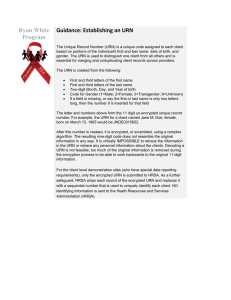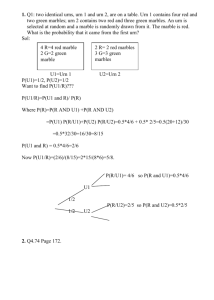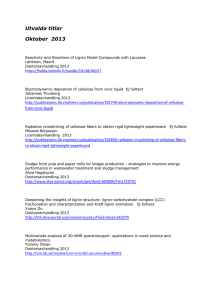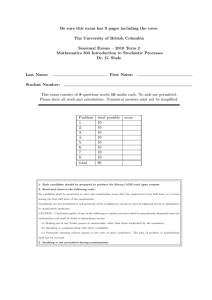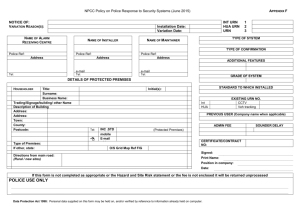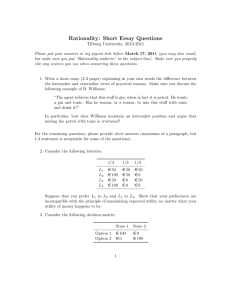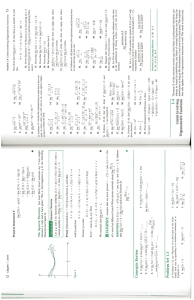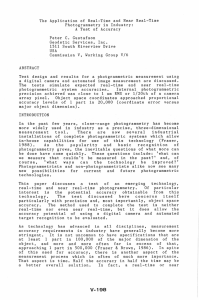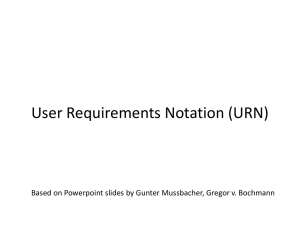Quiz 1 Solutions
advertisement
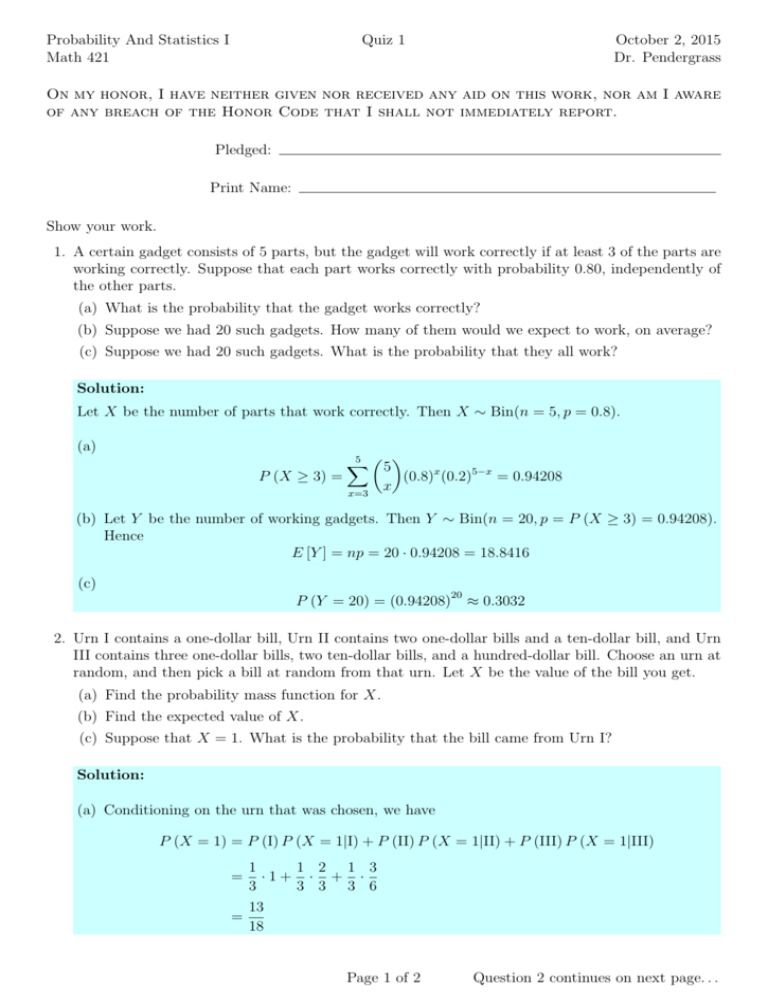
Probability And Statistics I Math 421 Quiz 1 October 2, 2015 Dr. Pendergrass On my honor, I have neither given nor received any aid on this work, nor am I aware of any breach of the Honor Code that I shall not immediately report. Pledged: Print Name: Show your work. 1. A certain gadget consists of 5 parts, but the gadget will work correctly if at least 3 of the parts are working correctly. Suppose that each part works correctly with probability 0.80, independently of the other parts. (a) What is the probability that the gadget works correctly? (b) Suppose we had 20 such gadgets. How many of them would we expect to work, on average? (c) Suppose we had 20 such gadgets. What is the probability that they all work? Solution: Let X be the number of parts that work correctly. Then X ∼ Bin(n = 5, p = 0.8). (a) 5 X 5 P (X ≥ 3) = (0.8)x (0.2)5−x = 0.94208 x x=3 (b) Let Y be the number of working gadgets. Then Y ∼ Bin(n = 20, p = P (X ≥ 3) = 0.94208). Hence E [Y ] = np = 20 · 0.94208 = 18.8416 (c) P (Y = 20) = (0.94208)20 ≈ 0.3032 2. Urn I contains a one-dollar bill, Urn II contains two one-dollar bills and a ten-dollar bill, and Urn III contains three one-dollar bills, two ten-dollar bills, and a hundred-dollar bill. Choose an urn at random, and then pick a bill at random from that urn. Let X be the value of the bill you get. (a) Find the probability mass function for X. (b) Find the expected value of X. (c) Suppose that X = 1. What is the probability that the bill came from Urn I? Solution: (a) Conditioning on the urn that was chosen, we have P (X = 1) = P (I) P (X = 1|I) + P (II) P (X = 1|II) + P (III) P (X = 1|III) 1 1 2 1 3 ·1+ · + · 3 3 3 3 6 13 = 18 = Page 1 of 2 Question 2 continues on next page. . . Continuing question 2... Quiz 1 Dr. Pendergrass Similarly, P (X = 10) = P (I) P (X = 10|I) + P (II) P (X = 10|II) + P (III) P (X = 10|III) 1 1 1 1 2 ·0+ · + · 3 3 3 3 6 4 = 18 = and P (X = 100) = P (I) P (X = 1|I) + P (II) P (X = 1|II) + P (III) P (X = 1|III) 1 1 1 1 ·0+ ·0+ · 3 3 3 6 1 = 18 = Hence the probability mass function for X is x $1 $10 4 P (X = x) 13 18 18 $100 1 18 (b) E [X] = 13 4 1 153 ·1+ · 10 + · 100 = = 8.5 18 18 18 18 (c) P (I|X = 1) = P (I and X = 1) P (X = 1) = P (I) P (X = 1|I) P (X = 1) = = 1 3 ·1 13 18 6 13 Page 2 of 2
